How difficult it is to mix and match fragrances in order to produce a unique blend is a question we get asked a lot. Performance wise, mixing two or more fragrance oils is not going to present any issue at all. But it takes a lot of patience and attention to detail in order to produce a really good result, as well as an extensive olfactory knowledge and some chemistry as well. Here are some useful tips to help you through your first steps in making your own signature blends with our products.
But first: A disclaimer
This post is all about the hobbyist perfumer who wants to make a simple blend for their own use. Utilizing our fragrance oils to create a new commercial end-product will require a new chemical assessment as every related document associated with the original scent (IFRA, SDS, Allergen Declaration, UFI number) will be voided with the new mix.
Perfumedom will not be held responsible for the new blend you are going to produce, will not be held accountable for its safety, neither its compliance. It is your responsibility to contact a chemisty lab for chemical assessment prior to releasing your new mix to the market for issuing of new SDS and IFRA documents, as well as to file the new dossier to ECHA for the issuing of a new UFI number.
Mono-aromatic Vs complex fragrances
As you browse through our product range you may have come across a few fragrances that are plainly named after their main component (i.e. Cinnamon) and others that are usually named like “this and that” (i.e. Honey and Raisins). And some of our fragrances have more elaborate – or poetic shall we say – names (i.e. Blooming Paradise). We strongly advise you to refrain using the latter type as they are highly complex and sophisticated blends.
Inexperienced (but aspiring) fragrance enthusiasts should also stay away from the dual-aromatic fragrances (the “this and that” type). These blends need a bit of practice in order to get a truly unique twist from them.
The ones that are safe to use in your own tests should be the fragrances with one distinct note or the mono-aromatics as we call them. Of course, they too are blends but the main component is ever-dominant and safe to mix without “mudding” the final output. Mono-aromatic fragrance oils in our assortment are the following*:
- Cinnamon
- Lemon Squeeze
- Madagascan Vanilla
- Sandalwood
- Rose Garden
- Jasmine
- Himalayan Cedar
- Wild Strawberries
- White Musk
- Sweet Cherry
- African Tonka
- Dark Olibanum
- Rosemary
- Orange Flower
- Honeysuckle
- Pure Lilac
- Seville Orange
- Wild Mint
- Blue Violet
- Oud incense
- White Amber
- Tahitian Gardenia
- Pink Evening Primrose
- Golden Apple
- Patchouli Indonesien
*Note that we are constantly adding new fragrances and this list may be incomplete by the time you are reading this post.
The possibilities are endless with our current set up of mono-aromatic fragrances and results can be achieved with minimal expertise on the field. It only takes a bit of patience and basic fragrance knowledge as we stated in the beginning of this post.
Knowing your fragrances
How to mix and match fragrances, all comes down to a basic understanding of what you have in front of you. It is not only about knowing what heart, base and top notes are (if you don’t know yet here is a great article about this subject). It is the ability to recall every single scent in each bottle in front of you without even opening it.
Do not be disheartened, it’s not as hard as you would imagine. In fact, you would be surprised to know that we humans have the ability to remember more than 10.000 different smells! And you only need to memorize no more than 40 for starters.
We recommend practicing every day by opening every bottle of a (mono-aromatic) fragrance you have acquired and taking a whiff. Then open up a more complex fragrance (maybe your own personal perfume) and try to distinguish as many components you can. This practice helps strengthen your scent memory and trains your sensory receptors at the same time!
Work with droplets
The easiest method, and by far the most economical as it reduces fragrance waste to the most minimum, is to work by counting drops. You would need only a couple of glass pipettes for that and some perfumer’s alcohol for cleaning, and of course a notebook to write down your precious formulas.
Make sure each drop to count for one gram, as scaling to a full kilogram could derail the output of your blend should some of your drops were miscalculated. For that reason, and just to be safe, it is best to acquire a basic digital scale.
Start from the bottom
A strong and long-lasting fragrance needs a solid base to flourish and develop. Vanilla, cinnamon, musk, cedar, vetiver, amber, patchouli and sandalwood are your best friends and you should use them at an ample degree (they can make up to a half of your entire blend).
Each type of fragrance, be it floral or woody or spicy, needs a specific combination of no more than 3 bases (though we believe that 2 base notes are quite sufficient for a well-rounded home scent). The rest of the blend (50%-60%) can be filled by any other fragrance from the list above.
Start small
At this point of your fragrance making journey you shouldn’t worry too much about heart and top notes as all our mono-aromatic fragrances are already “rounded”. This means that even the strongest of our bases already have a small percentage of top and middle components in order to be used as stand-alone fragrances as well.
With that being said, we will advise you to start with simple combinations of 2 to maybe 4 aromas at most (excluding the bases of course). Less is more the saying goes, and we concur by saying “less is more concise”. Your blend should make sense with an average of 5 notes. Any more than that and the risk of “blurring” the final output goes up dramatically with each new addition.
Examples for your inspiration
Mix and match fragrances with some creative examples. For your convenience we are not going to mention grams, but instead we will state “parts”. 10 parts equals 1 whole. It’s up to you to do the math!
Basic Blend with mono-aromatics: Strawberry Ice Cream
5 parts Madagascan Vanilla, 2 parts Vanilla Shake, 3 parts Wild Strawberries
Advanced Blend with mono-aromatics: Cherry Pie
3 parts Madagascan Vanilla, 1 part Vanilla Shake, 3 parts Cookie Crumble, 3 parts Sweet Cherry
Basic blend with 1 complex fragrance: Aqua Sunshine
3 parts Patchouli Indonesien, 3 parts Orange Flower, 4 parts Green Tea and Lemon
Advanced blend with 2 complex fragrances: Old Library
3 parts Himalayan Cedar, 2 parts Dark Olibanum, 3 parts Leather and Tonka, 2 parts Vanille Santal Deluxe

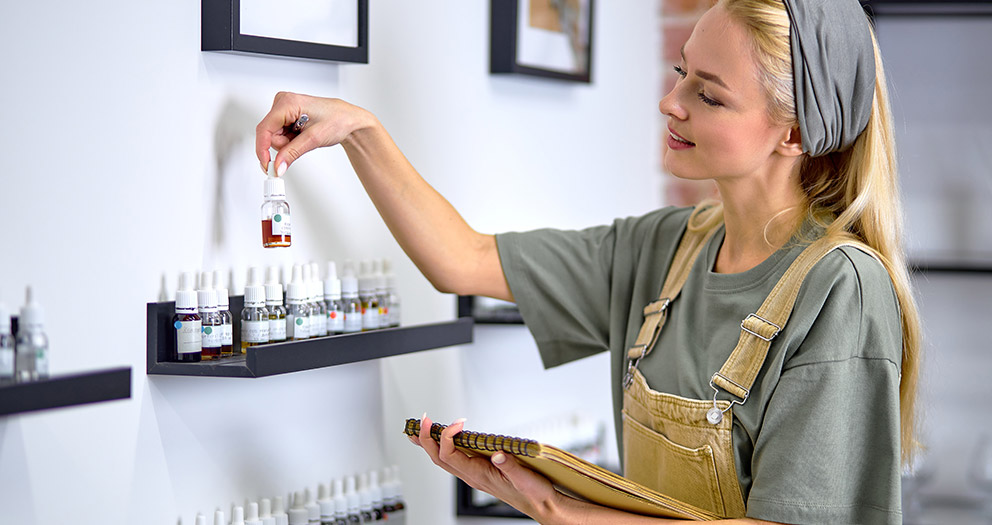

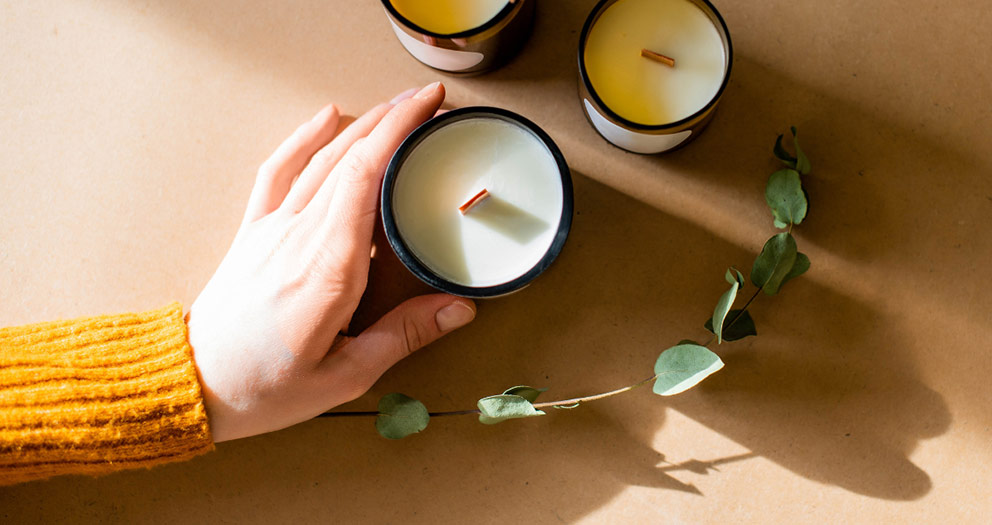
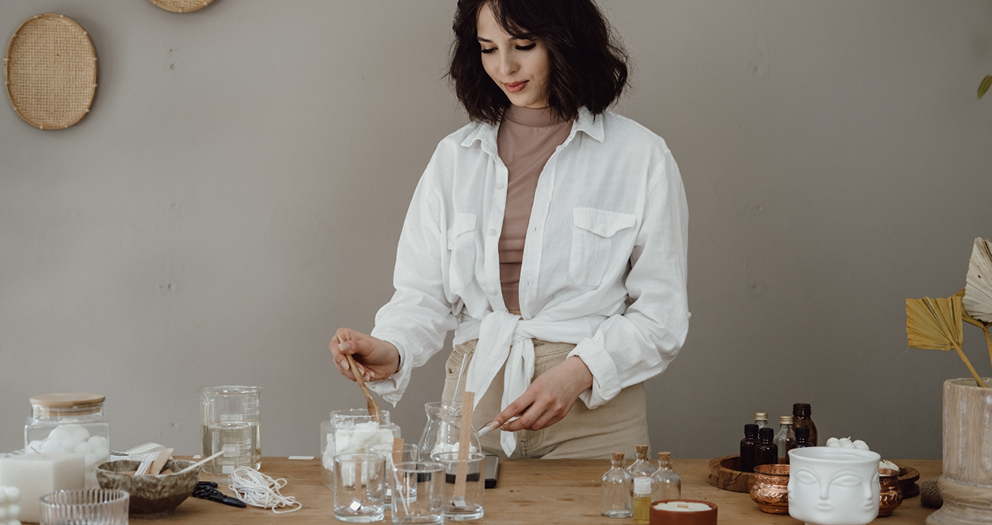
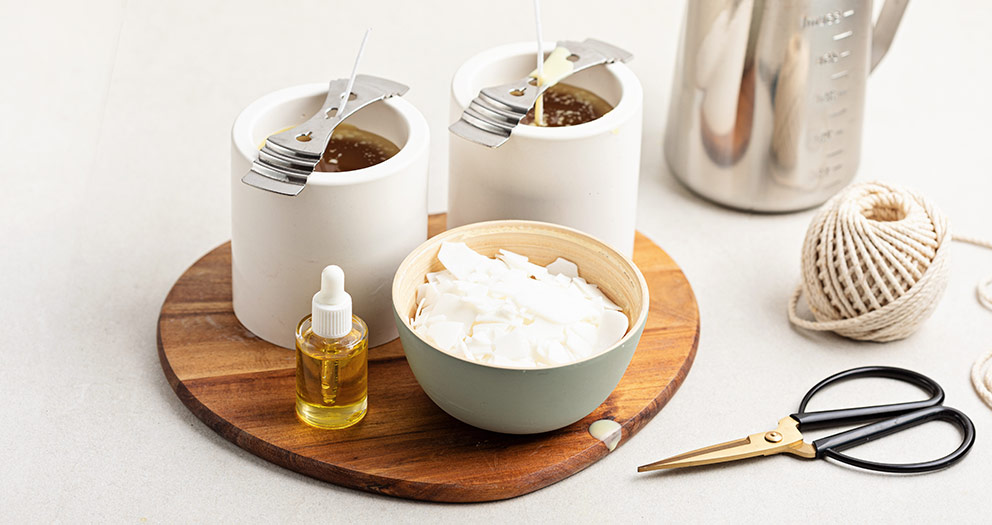
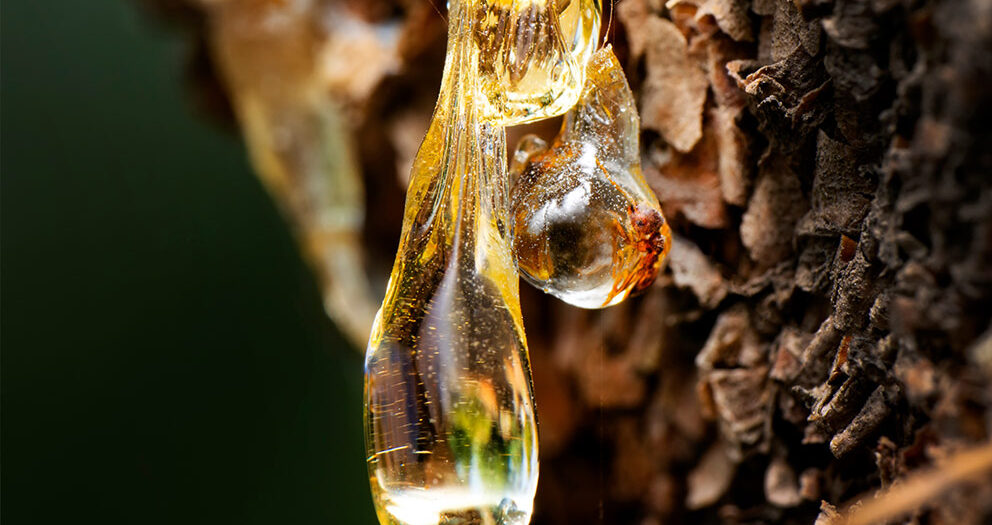
When you write:
“Make sure each drop to count for one gram” – do you mean that one single drop from a pipette should be equivalent to 1 gram?
Hello. Yes, exactly. Make sure you are consistent with the size of the droplets you make!
Impressive insights into creating unique fragrances with your product range! The distinction between mono-aromatics and complex blends makes the process more approachable for beginners.
I am new here and this is excited to take advantage and delve into this beautiful world of scents notes